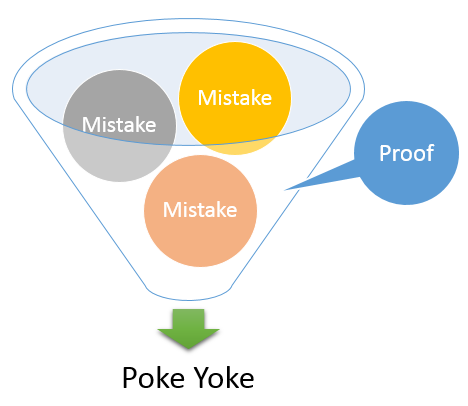|
Poke Yoke, is a concept of making sure there are no mistakes in process/services. Poke Yoke, is often known as “mistake proof”. Let me start here with very simple example: In kitchen, there are two tab for water. One is for hot and other is for cold. If nothing is mark or mention on them, then it may happen, one of your guest open hot water tab & may feel quick discomfort while washing his/her hands. How can you make sure, this simple activity as mistake proof ? Answer is Poke Yoke. By marking, Hot tab with Red color / Blue with Cold, signify the difference. Industry or company, learn this kind of activity through a concept of poke yoke thereby delivering mistake proof product/ service to consumer. This concept develop into standards which are adopted by other companies.
Poke Yoke is associated with cost of quality. If you can’t “mistake proof ” the process, it will result in loss of money. Below are few more example: -If a customer, is returning more product then there is something wrong with your process. Use Poke yoke tactics to make sure it’s mistake proof. -If lot of people are unsubscribing your newsletter then there must be something wrong with your content, design etc. If you talk about defect. I will say Poke yoke, is the father of defect. Learning this important tactics might save some money. It’s very simple. You just need to make yourself familiar with the way it work. Explore more about Poke Yoke ” mistake proof Judgment Inspection Informative Inspection Successive Check Self Check Source Inspection Poke Yoke Systems Control Warning Mistake proof” at below wiki link: POKE YOKE TACTICS “Human errors can occur in many ways. Any operation that relies on the human element will run into the problem of errors. The notion of concentrating 100% of the time on a task will not guarantee zero defects in the product. Poka-yoke is the Japanese term for “mistake-proofing” or “fail-safing” a task. Poka-yoke devices can be installed at low costs.”
0 Comments
Leave a Reply. |

 RSS Feed
RSS Feed